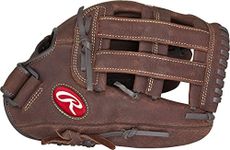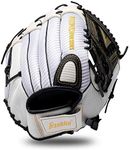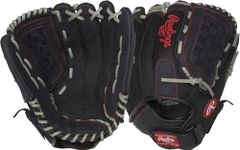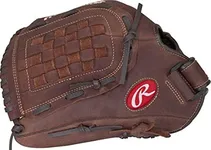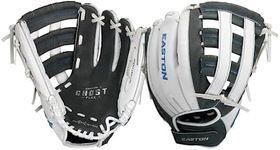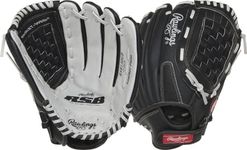Buying Guide for the Best Softball Gloves
Choosing the right softball glove is essential for comfort, performance, and injury prevention. The best glove for you will depend on your position, hand size, and personal preferences. Understanding the key features of softball gloves will help you make an informed decision and ensure you get a glove that feels right and performs well on the field.Glove SizeGlove size refers to the length of the glove from the top of the index finger down to the heel of the glove. This is important because different positions require different sizes for optimal performance. Infielders usually prefer smaller gloves for quick ball transfers, while outfielders need larger gloves for better reach and catching fly balls. Catchers and first basemen have specialized mitts with unique sizing. To pick the right size, consider your position and try on a few sizes to see what feels comfortable and allows you to control the ball easily.
WebbingWebbing is the pattern of leather between the thumb and fingers. It affects how you catch and control the ball. Closed webs are good for pitchers who want to hide their grip, while open webs are preferred by infielders for quick ball release. Outfielders often like deeper, more flexible webs for catching fly balls. Think about your position and whether you need quick ball transfers or more ball security when choosing the web style.
MaterialSoftball gloves are made from different materials, mainly leather or synthetic materials. Leather gloves are more durable and mold to your hand over time, but they require a break-in period. Synthetic gloves are lighter and easier to break in, making them good for beginners or younger players. If you play often and want a glove that lasts, leather is a good choice. If you want something ready to use right away, synthetic might be better.
Fit and ComfortFit and comfort are about how the glove feels on your hand. A glove that's too tight or too loose can affect your performance and even cause blisters. Look for adjustable wrist straps or laces that let you customize the fit. Try the glove on and make sure you can open and close it easily. The right fit will feel snug but not restrictive, and you should be able to move your fingers comfortably.
Pocket DepthThe pocket is the area where the ball sits when caught. Infielders usually prefer a shallow pocket for quick ball retrieval, while outfielders and pitchers benefit from a deeper pocket for better ball security. Think about how quickly you need to get the ball out of your glove and how often you catch fly balls versus grounders to decide on the right pocket depth for your needs.
Hand OrientationHand orientation refers to whether the glove is for a right-handed or left-handed thrower. A right-handed thrower wears the glove on the left hand, and a left-handed thrower wears it on the right hand. Make sure you choose the correct orientation for your throwing hand, as this will affect your ability to catch and throw efficiently.
